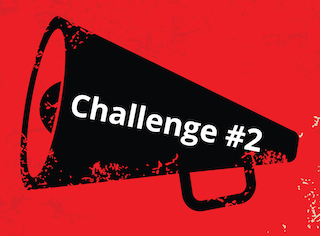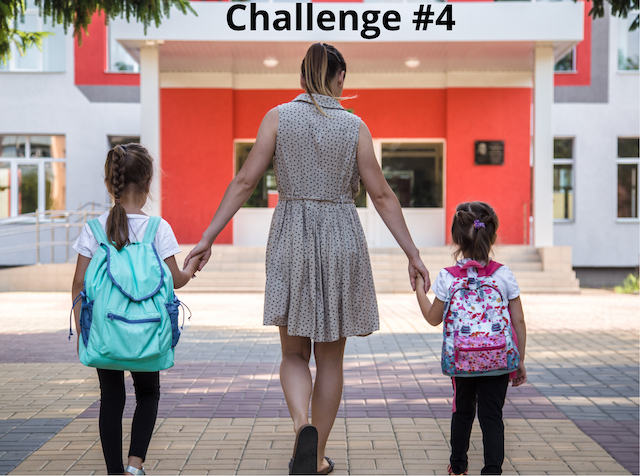Relocation (or PCS) is one of the hallmarks of military life. While moving comes with the territory, it’s certainly not easy, especially for military families with school-age children. Changing schools—in addition to all the other adjustments that come with a move—can be tough on parents and kids. Yet military kids change schools an average of 6–9 times between kindergarten and graduation—that’s 3 times more often than civilian kids. Those moves can happen any time, including the middle of a school year. The more you prepare and support your children during the transition, the better they will adjust and even thrive. Check out these top 5 challenges of switching to a new school—and strategies for success.
 Family stress: Moving is tough for everyone
Family stress: Moving is tough for everyone
No matter how you slice it, moving is hard. Even if you’re a military family who has moved many times in your career, there are always going to be hiccups. And more than likely, there will be some tension. It’s normal for adults to struggle with the added pressure and stress, and it’s also very normal for children to experience their own anger or resentment at having to leave the place they’ve called home. Unfortunately, as a parent, your level of stress directly impacts how well your kids cope with the change. So it’s up to you to set the tone.
Optimization strategy: Regulate, reframe, and reach out.
Setting the right tone doesn’t mean discounting your children’s experience, especially if they’re having a hard time. (It’s important to show empathy). It means handling your stress well (regulating), finding the upside in a difficult situation (reframing), and turning to others for their support (reaching out). The better you are at these 3 things, the more resilient your children will become and the more likely they’ll be to adapt well during the transition. In turn, they will grow more mature, learn more about other cities and cultures, and develop strong social skills.
 Enrollment and extracurricular issues: It’s not so easy to pick up where you left off
Enrollment and extracurricular issues: It’s not so easy to pick up where you left off
When your children need to transfer schools, the shift might not be as seamless as you’d hope—especially if the move is happening in the middle of the school year. It takes time for records to be transferred and equivalency to be established. If one of your children needs special accommodations or is in a gifted or advanced placement program, their new school might not be so quick to place them without a push. This can be especially true in the case of sports or extracurricular activities. If your children join their new school after club start dates or tryouts are complete, it might be a challenge to get them involved in all the ways they had been before the move.
Optimization strategy: Speak up and speak out.
You can’t fight all your kids’ battles, but when it comes to their education, it’s important to speak up so their new school offers the right support. Start by reaching out to your School Liaison Officer (SLO)—a contact at your local installation who can help you find information and opportunities at your children’s school. Also, take time to read up on the Interstate compact on educational opportunity for military children. It’s an agreement among schools in all 50 states and Washington, D.C. to ensure military kids get all the same educational opportunities as their peers—and that they’re not penalized because of inconsistent policies across different school districts.
 Unfamiliar social landscape: Everything and everyone is new
Unfamiliar social landscape: Everything and everyone is new
One of the biggest challenges your children might experience is the shift to a completely new environment. They’ll have to learn the layout of a new school, where to go and when, and become familiar (and compliant!) with new rules and policies. Most importantly, they’ll have to leave their friends behind, go into a new social landscape, and start all over. It can be hard to build new relationships, but it might be especially tough for your children to open up knowing there’s a good chance they might have to leave again eventually.
Optimization strategy: Be there, be present.
Bottom line, confronting new places and new faces is something your kids will have to do without you. You can’t go to class with them, and you can’t make their friends for them. What you can do is be there for them with compassion and strength when they have a tough time or need some extra support. Make extra time to be together as a family so your kids can recharge, reset, and go into each school day prepared and optimistic. Take extra steps where you can to make sure they’re ready for new challenges in the classroom.
 Lack of understanding: Teachers, administrators, and the school community aren’t generally familiar with military life
Lack of understanding: Teachers, administrators, and the school community aren’t generally familiar with military life
Even though there are more than 1 million military kids in the school system, they only make up about 4% of the K-12 population. That means there’s a pretty good chance many teachers, counselors, and staff at your children’s new school aren’t familiar with military culture or what it means to grow up in a military family. You might encounter bias, and some people might judge you or your children based on their assumptions about Service Members. There might also be a lack of awareness about the challenges that military kids face around PCS, their parent’s deployment, and other military family life challenges.
Optimization strategy: Proactively open the lines of communication.
The social and academic support your children receive from their school community is vital to their success. So, it’s worth the time to make some time to meet with teachers and school administrators before problems arise. Start by planning a conference (without the kids) to help your children’s teachers get to know you—and so you can share some of what it means to be in a military family. Be prepared with questions, get clarification about school policies (such as attendance, dress codes, and cell phone use), and emphasize you’re open to communication as the school year progresses. Do your best to answer any questions they might have. As time goes on, let teachers know of any changes (such as a parent who’s scheduled for deployment, injured, or other significant events occur).
 Academic inconsistency: Not all courses are created the same
Academic inconsistency: Not all courses are created the same
There’s a chance your children might have to redo coursework and lessons, or worse, miss them all together. It might be a challenge to get the right placements, and you might notice your children are falling behind their peers or becoming bored or frustrated at having to relearn information they already know.
Optimization strategy: Do YOUR homework.
Get a good sense of where your children should be in their academic career by reading up on your state’s curriculum standards. Nearly 90% of military kids are in public schools, so there’s a good chance their school has adopted the Common Core State Standards. Talk with your kids to get a sense of how they’re feeling about their academic needs. And again, your SLO can be a valuable contact to help you find tutors and other support resources.
Additional Resources
When it comes to relocation, changing schools can be an added challenge for both you and your kids. But with teamwork and support it can become an opportunity for growth. In addition to facing some of these challenges head on, it’s also important to be prepared. Use a school transition checklist, talk to your fellow Service Members, and address concerns before they become problems. The good news is, there are many support resources out there if you need more information on navigating a school move for your kids.
- Consider reaching out to a Military OneSource education consultant.
- Learn more about the programs and resources at the Military Child Education Coalition.
- Visit the National Military Family Association’s child education page.
If you’re still worried about the academic transition for your kids, think outside the box to come up with alternative solutions. For example, a private school, DoDEA-operated school, or even homeschooling might be the right option for your family. You might also consider exploring distance learning options or online learning programs—especially if one of your children is close to graduation. Or, if a move would be very disruptive to their success or graduation, consider having him or her stay behind temporarily with a friend or family member. Another similar option is to explore becoming a “geo-bachelor”/“geo-bachelorette”—a Service Member who lives apart from their family. There might not be a perfect solution, but it’s important to explore all the options to find what will work best for your family.
Read more at HPRC about the top traits of optimized families.
